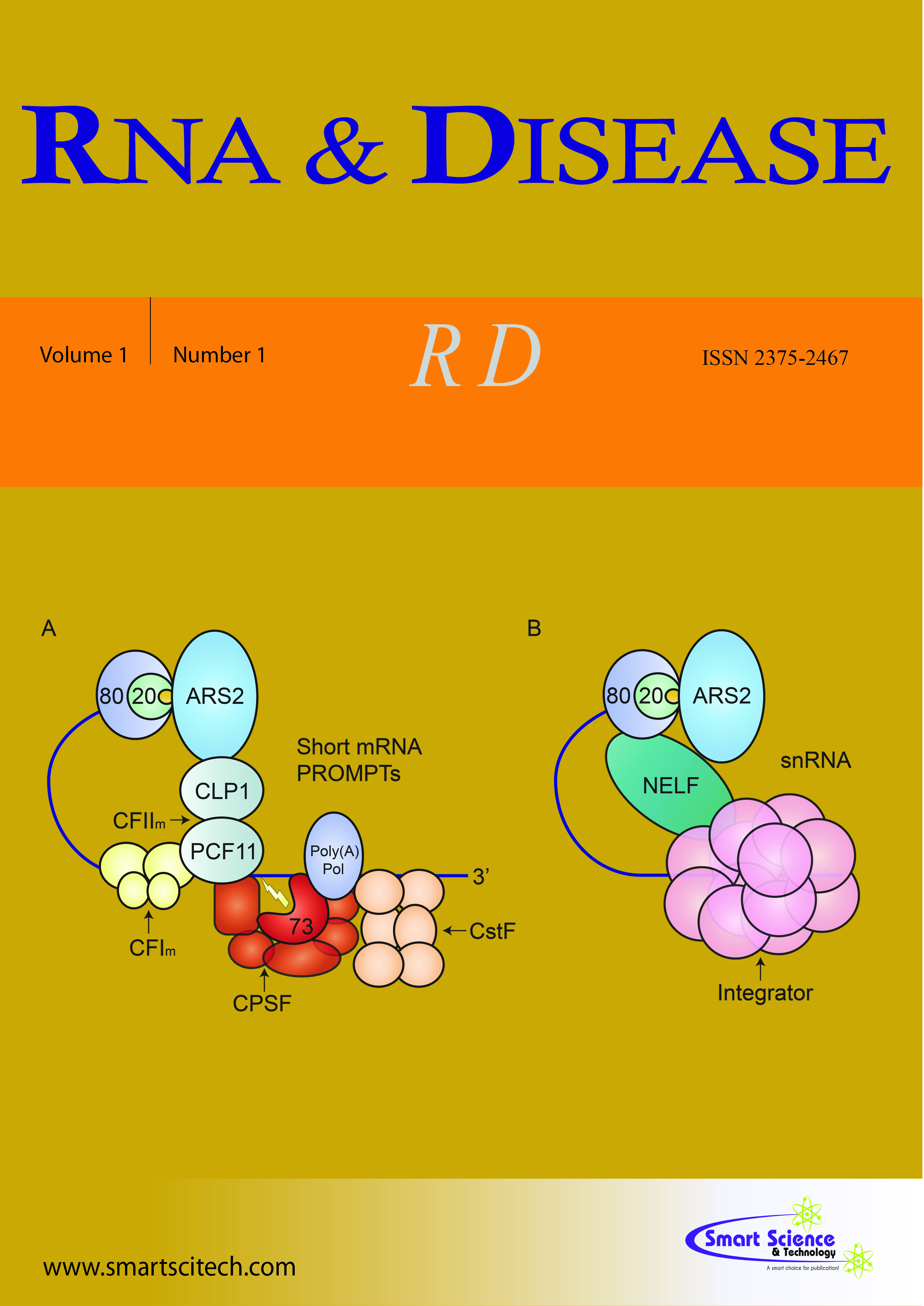Widening HSF1 horizon: the microRNA connection
DOI: 10.14800/rd.596
Abstract
Heat shock factor 1 (HSF1) is an evolutionary conserved transcription factor, which acts as protector of cellular proteome against adverse environmental conditions including increased temperature in eukaryotes. HSF1 positively regulates expression of a set of cytoprotective proteins popularly called as heat shock proteins (HSPs) as part of an adaptive mechanism of cells known as heat shock response (HSR). It has also been shown that apart from cellular stress response, HSF1 has the ability to regulate many other biological processes including aging, metabolism, development etc. This is primarily achieved by the ability of HSF1 to regulate expression of myriad of genes other than those coding for classical HSPs in presence and/or absence of stress. MicroRNAs (miRNAs) are short endogenous RNA molecules which can regulate many biological processes by acting as post-transcriptional regulators of gene expression. Altered expression of miRNAs in response to thermal stress has been reported in different species; however, the underlying mechanism remained elusive. We recently showed that HSF1 has the ability to regulate expression of miRNAs by binding to their upstream sequences and our result established hsa-miR-432 as the first HSF1-regulated miRNA.We therefore speculate that the landscape of HSF1 transcripts is much broader than it was earlier thought and includes HSF1-regulated miRNAs, the recently identified non-coding arm of HSF1 transcripts. The HSF1-regulated miRNAs have the potential to regulate many cellular events by acting as important downstream molecules of HSF1.Our finding thus uncovers a novel functional aspect of HSF1 with the emergence of hsa-miR-432 as a novel transcriptional target of HSF1.












